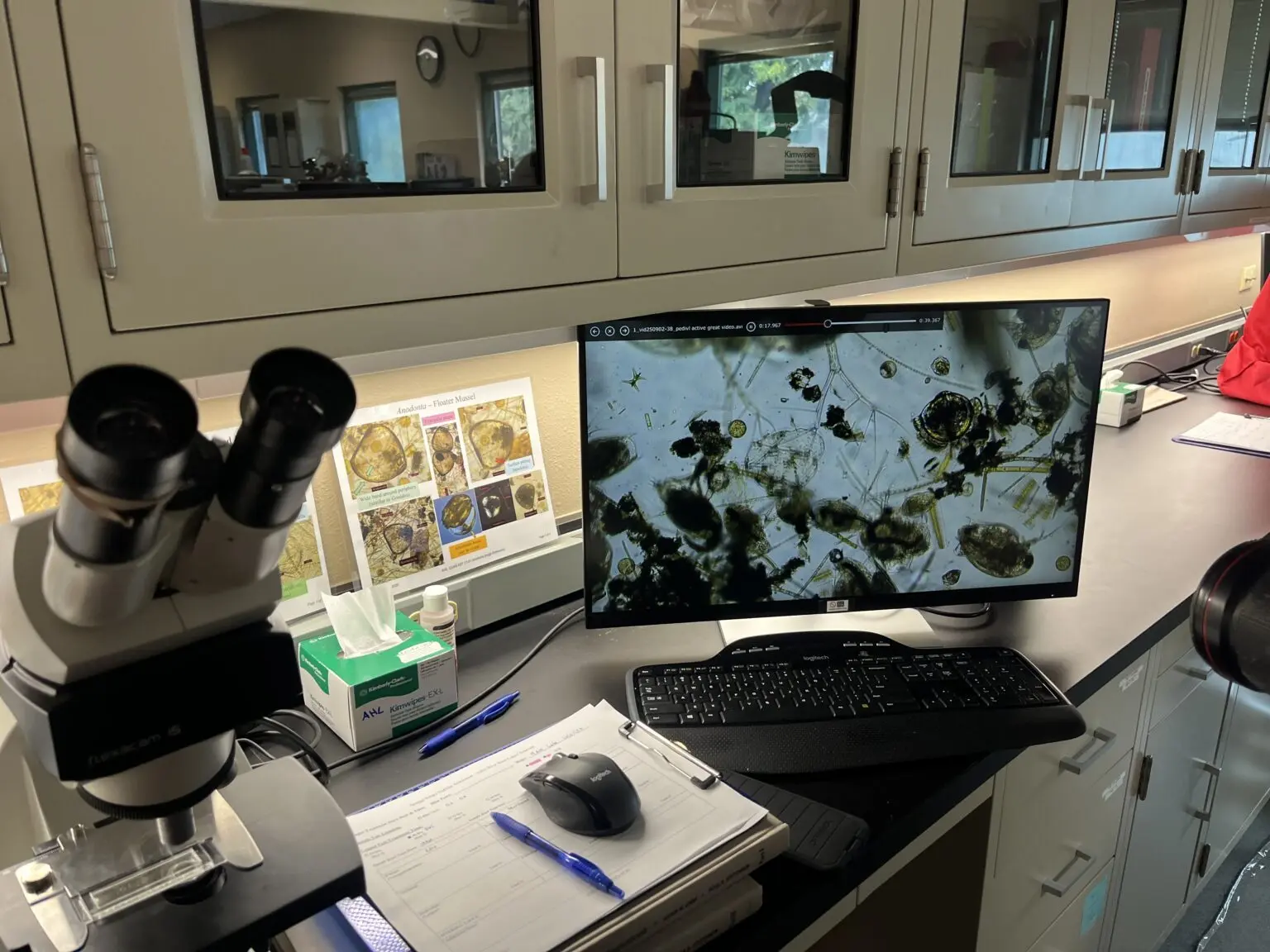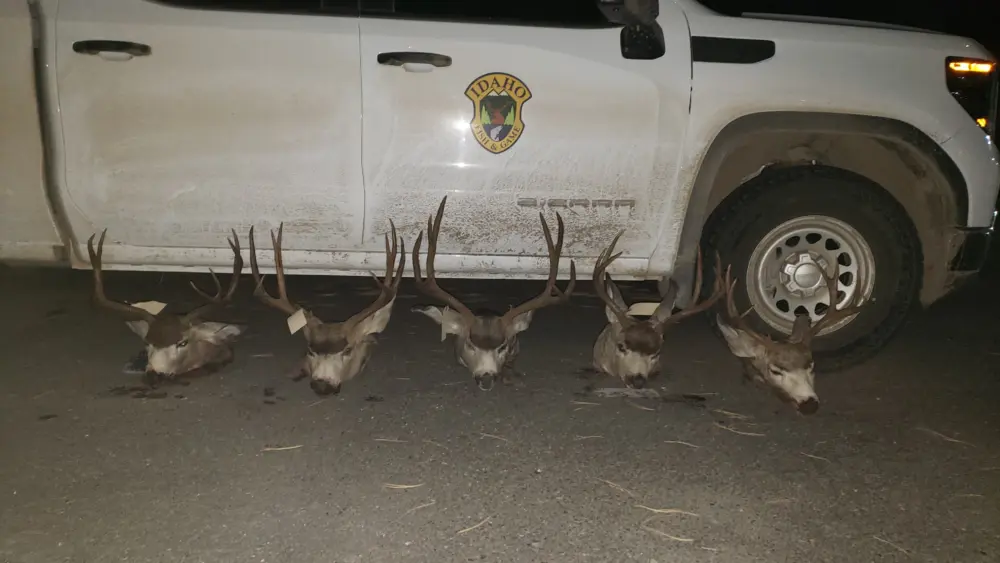TWIN FALLS, ID – State officials have not found any viable quagga mussels since the state administered the most recent copper-based treatment in the Snake River near Twin Falls this fall, Idaho State Department of Agriculture Director Chanel Tewalt said Monday.
Quagga mussels are an invasive, nonnative species that Department of Agriculture officials first detected in microscopic larvae form called veligers in the Snake River in 2023. Since the initial detection, officials also detected quagga mussels in water samples taken in September 2024 and again this September.
Because the mussels are capable of reproducing rapidly and clogging pipes used for irrigation and drinking water, Department of Agriculture officials, contractors and other state officials have adopted a total eradication strategy and administered a copper-based chemical called Natrix in the Snake River in an attempt to kill all of the mussels.
Once they reach adult stage, state officials said one pair of quagga mussels is capable of producing as many as 1 million offspring per year.
This fall, crews administered the copper-based chemical across a 3.5 mile section of the Snake River near Shoshone Falls from Sept. 30 to Oct. 14.
“No, we’re not finding any viable mussels,” Tewalt told the Idaho Capital Sun after briefing the Idaho Legislature’s Natural Resources Interim Committee meeting Monday. “And as you see in the chart too, after 48 hours of active treatment, we could find no viable veligers, which is important. That’s what we would expect to have happen.”
During Tewalt’s briefing at the Idaho State Capitol in Boise, she told legislators that the September 2023 detection of quagga mussels in the Snake River near Twin Falls was the first-ever detection of quagga mussels in the entire Columbia River basin system. The Snake River is the longest river in Idaho, a source of drinking water and irrigation and a major tributary of the Columbia River. Because the river system is an important source of drinking water, irrigation and hydroelectricity, Tewalt said state officials moved quickly and with a sense of purpose.
“It goes without saying that quagga mussels … are the single-biggest invasive species threat to our aquatic system,” Tewalt told legislators Monday.
Copper chemical used to kill invasive mussels also kills fish
One of the consequences of administering the copper-based chemical to the Snake River is that it also suffocates and kills fish in the river. In 2023, thousands of fish died and floated to the surface of the Snake River in such quantities that state staffers took to the river with boats and nets to remove tons of dead fish, the Sun previously reported.
This year, Tewalt told legislators that there was “minimal fish mortality,” perhaps in part due to the fact that fish in that section of the river that were vulnerable to the copper chemical had already been killed and not restocked.
“Before we got started, we indicated to the public that this treatment would kill all of the fish in the infected parts of the Snake River,” Tewalt told legislators. “That is a high and heartbreaking cost, but it is what we had to do to try to save the entire river.”
On top of administering the copper chemical, state officials also increased water sampling, increased the number of watercraft inspection stations and decontamination hot washes and conducted public outreach campaigns, Tewalt said.
What does the quagga mussel eradication program look like?
This fall about 25 Idaho State Department of Agriculture staffers and another 25 or 30 contractors were based on the Snake River near Twin Falls for nearly 24 hours a day from Sept. 30 to Oct. 14. Nearby in Twin Falls, laboratory technicians analysed fresh water samples to ensure the concentration of the copper chemical was administered in the planned one-part-per-million ratio and to monitor for quagga mussel veligers.
New this year, crews focused on hard-to-reach sections of the Snake River, including deep pools and sections of the river that created unique laminar flow challenges that had previously made administering the chemical in certain stretches unique.
This fall the department relied on certified scuba divers. One state employee who is a scuba diver, Southern Chief Treatment Engineer Jeremey Varley, even designed and rigged a custom underwater manifold system to better administer the copper chemical in hard-to-reach stretches of the river.
Tewalt is encouraged by the treatment program, but does not yet know if the effort succeeded in eradicating all of the quagga mussels.
Before the most recent treatment began, the September water samples showed that the infested portion of the Snake River was about half the size as it was the previous year.
Once treatment began, water samples showed non-viable quaggal mussel larvae in about 48 hours and crews have not found any viable mussel larvae since then.

Tewalt also has more confidence in the availability of water samples and sampling results, since the water samples are now efficiently analyzed at a nearby lab in Twin Falls instead of sent out-of-state for testing, as before.
However, once water temperatures drop due to colder weather, Tewalt said the mussels will stop reproducing again until the weather warms again next summer or fall. That means officials may not know exactly how effective this year’s treatment was until next summer and fall’s water samples are analyzed.
In the meantime, Tewalt said inspection and decontamination stations will continue to be increased, water sampling will continue and the Idaho State Department of Agriculture will do its best to limit the impact on people who enjoy recreating on the river.
“So, more stations, even more of a focus on inspections, communications and sampling,” Tewalt told the Sun on Monday.
Idaho Capital Sun is part of States Newsroom, a nonprofit news network supported by grants and a coalition of donors as a 501c(3) public charity. Idaho Capital Sun maintains editorial independence. Contact Editor Christina Lords for questions: info@idahocapitalsun.com.





